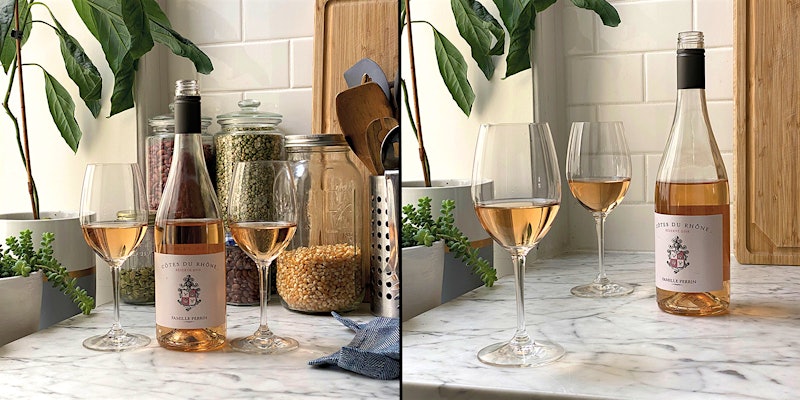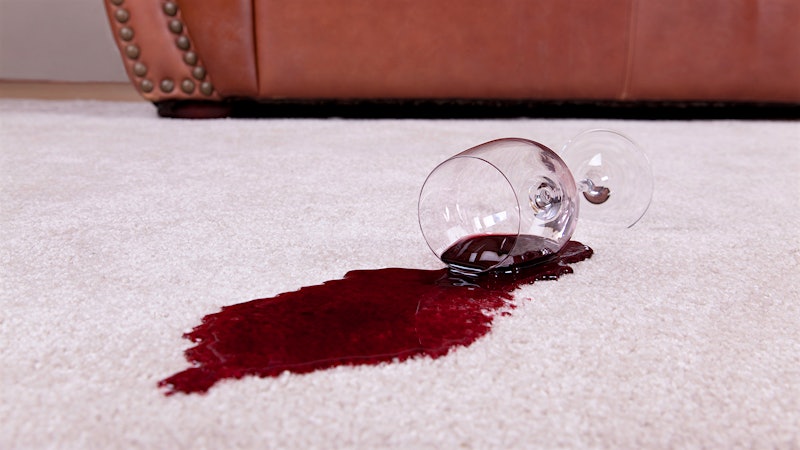Good news: When matching food and wine, you don’t have to learn complicated systems for selecting the right bottle to enhance what you're eating. This is not rocket science. A few simple guidelines will help you make successful wine-and-food pairings.
Of course, it’s fun to experiment and fine-tune, and with experience you may be able to create spectacular matches that dramatically improve both the dish and the wine. But save those efforts for special occasions and special wines.
Keep It Simple
The three most important rules when it comes to wine-and-food pairing are:
1. Drink and eat what you like
Choose a wine that you would want to drink by itself, rather than hoping a food match will improve a wine made in a style you don’t like. That way, even if the pairing isn’t perfect, you will still enjoy what you’re drinking; at worst, you might need a sip of water or bite of bread between the dish and the glass. The same holds true for the food: After all, if you detest liver, there is no wine pairing on Earth that will make it work for you.
2. Look for balance
Consider the weight—or body, or richness—of both the food and the wine. The wine and the dish should be equal partners, with neither overwhelming the other. If you balance the two by weight, you raise the odds dramatically that the pairing will succeed. This is the secret behind many classic wine-and-food matches.
There’s a fair amount of instinct to this. Hearty food needs a hearty wine. Cabernet Sauvignon complements grilled steak or lamb chops because they’re equally vigorous; the dish would run roughshod over a crisp white wine. In contrast, a light Soave washes down a subtly flavored poached fish because they are equals in delicacy.

How do you determine weight? For the food, fat—including what comes from the cooking method and the sauce—is the main contributor. (Note how a salad with blue cheese dressing feels heavier than one with citrus vinaigrette, as does fried chicken versus poached.)
For a wine, you can get clues from the color, grape variety and alcohol level, along with the winemaking techniques and the region’s climate. (Wines with less than 12 percent alcohol tend to be lighter-bodied; those with more than 14 percent are heavier.) If you’re not familiar with a wine, consult our lists below.
3. Match the wine to the most prominent element in the dish
This is critical to fine-tuning wine pairings. Identify the dominant character in the dish; often it's the sauce, seasonings or cooking method, rather than the main ingredient. Consider two different chicken dishes: Chicken Marsala, with its browned surface and a sauce of dark wine and mushrooms, versus a chicken breast poached in a creamy lemon sauce. The caramelized, earthy flavors of the former tilt it toward a soft, supple red, while the simplicity and citrus flavors of the latter call for a fresh white.
Getting More Advanced
Once you’ve considered these three important rules, you can get more detailed if you want and consider other subtleties of the wine.
First it’s useful to understand the components from the grapes that make up a wine’s structure: the fruit flavors and sugar, which give wines a soft feel in the mouth, and the acidity and tannins, which give wines a sensation of firmness. And of course, there’s the alcohol, which can feel softer in smaller amounts, harder in higher ones.
Red wines are distinct from whites in two main ways: tannins and flavors. Tannins are compounds that provide structure and texture to a wine; they’re responsible for that astringent sensation you feel on the sides of your cheeks, much like when you drink a strong cup of tea. Many red wines have tannins; few white wines do, unless they have spent extensive time aging in oak barrels.

White and red wines share many common aromas and flavors; both can be spicy, earthy, minerally or floral. But the apple, pear and citrus flavors in many white wines seldom show up in reds, and the dark currant, cherry and plum flavors of red grapes usually do not appear in whites.
Here are some other pairing principles to consider:
4. Structure and texture matter
Ideally, a wine’s components are in balance, but you can affect that balance, for better or worse, with the food pairing. Elements in a dish can accentuate or diminish the acidity and sweetness of a wine (and vice versa), as well as the bitterness of its tannins.
High levels of acidic ingredients, such as lemon or vinegar, for example, benefit high-acid wines by making them feel softer and rounder in comparison. On the other hand, tart food can turn balanced wines flabby.
Sweetness on the plate can make a dry wine taste sour, but pairs well with a bit of sweetness in the wine; as long as a wine balances its sugar with enough natural acidity (such as German Rieslings and demi-sec Champagnes), it can work very well with many dishes.

Tannins interact with fats, salt and spicy flavors. Rich, fatty dishes such as steak diminish the perception of tannins, making a robust wine such as a Cabernet seem smoother, as do lightly salty foods like Parmigiano-Reggiano cheese. However, very salty foods increase the perception of tannins and can make a red wine seem harsh and astringent; salt likewise accentuates the heat of a high-alcohol wine. Very spicy flavors also tend to react badly with tannins and high alcohol, making the wines feel hotter; such dishes fare better with fruity or lightly sweet wines.
5. Look for flavor links
This is where pairing can be endless fun. The aromatics of wine often remind us of foods such as fruits, herbs, spices and butter. You can create a good match by including ingredients in a dish that echo—and therefore emphasize—the aromas and flavors in a wine. For a Cabernet, for example, currants in a dish may bring out the wine’s characteristic dark fruit flavors, while a pinch of sage could highlight hints of herbs.
On the other hand, similar flavors can have a “cancellation effect”—balancing each other out so that other aspects of a wine come out more strongly. Serving earthy mushrooms with an earthy red might end up giving more prominence to the wine’s fruit character.
6. Give consideration to age
Aged wines present a different set of textures and flavors. As a wine matures, the power of youth eventually subsides; the tannins soften, and the wine may become more delicate and graceful. Fresh fruit flavors may give way to earthy and savory notes, as the wine takes on more complex, secondary characteristics. When choosing dishes for older wines, tone down the richness and big flavors and look for simpler fare that allows the nuances to shine through. For example, rather than a grilled, spice-rubbed steak with an older Cabernet, try lamb braised for hours in stock.
Entire books have been written on the subject of food-and-wine pairing, and you can have a lifetime of fun experimenting with different combinations. If you’d like to learn more, become a WineSpectator.com member.

Weighing Your Options: Lists of Wines by Body
Matching by weight is the foundation of the old rule about white wine with fish and red wine with meat. That made perfect sense in the days when white wines were mostly light and fruity and red wines were mostly tannic and weighty. But today, color-coding does not always work.
Like human beings, wines come in all dimensions. To match them with food, it’s useful to know where they fit in a spectrum, with the lightest wines at one end and fuller-bodied wines toward the other end. For perspective, we offer the following lists of commonly encountered wines.
OK, purists, you’re right: Some Champagnes are more delicate than some Rieslings, and some Sauvignon Blancs are bigger than some Chardonnays, but we’re painting with broad strokes here. When you’re searching for a light wine to go with dinner, pick one from a category at the top of the list. When you want a bigger wine, look toward the end.
To make your own classic matches, start off on the traditional paths and then deviate a little. Don’t get stuck on Cabernet with red meats—look up and down the list and try Zinfandel or Châteauneuf-du-Pape. Instead of Burgundy or Pinot Noir with sautéed mushrooms, try a Barbera or a red Bordeaux. That’s the way to put a little variety into your wine life without straying too far from the original purpose.
Selected dry and off-dry white wines, lightest to weightiest:

Light
- Muscadet
- Orvieto
- Pinot Blanc/Pinot Bianco
- Pinot Grigio (e.g. Italy)
- Prosecco
- Rioja (white)
- Soave
Light to medium
- Chenin Blanc, dry or off-dry
- Gewürztraminer, dry or off-dry
- Pinot Gris (e.g. Alsace, Oregon), dry or off-dry
- Riesling, dry or off-dry
Medium, leans toward herbal
- Bordeaux, white
- Grüner Veltliner
- Sancerre or Pouilly-Fumé
- Sauvignon Blanc
- Sémillon
- Verdejo
Medium, leans toward minerally
- Albariño
- Arneis
- Cava
- Champagne and other dry sparkling wines
- Chablis (or other unoaked Chardonnay)
- Falanghina
- Gavi
- Greco di Tufo
- Mâcon
- Vermentino
Full/creamy
- Burgundy whites, Côte d’Or
- Chardonnay (e.g. California or other New World, oaked)
- Rhône whites
- Viognier
Selected red wines, lightest to weightiest:

Light
- Beaujolais (or other Gamay)
- Dolcetto
- Valpolicella (not Amarone)
Medium, more acidity than tannins, tends toward red fruits
- Barbera
- Burgundy
- Cabernet Franc
- Chianti (or other Sangiovese)
- Côtes du Rhône
- Grenache/Garnacha
- Pinot Noir (e.g. California, New Zealand, Oregon)
- Rioja reds (other Tempranillo)
Medium to full, balanced, tends toward dark fruits
- Bordeaux
- Brunello di Montalcino
- Malbec (e.g. Argentina)
- Merlot
- Rhône reds, Northern
- Pinotage
- Zinfandel (also Primitivo)
Full, more tannic
- Barolo and Barbaresco
- Cabernet Sauvignon (e.g. California, other New World)
- Châteauneuf-du-Pape
- Petite Sirah
- Ribera del Duero
- Shiraz/Syrah
Selected sweet wines:

Lighter
- Gewürztraminer, late-harvest
- Moscato d’Asti
- Muscat
- Riesling, late-harvest
- Rosé, off-dry
- Sauternes and Barsac (other botrytized Sauvignon Blanc-Sémillon)
- Vin Santo
- Vouvray, moelleux (late-harvest Chenin Blanc)
Heavier
- Australian Muscat or Muscadelle
- Banyuls
- Madeira (Bual or Malmsey)
- Port
- Recioto della Valpolicella
- Sweet Sherry (Cream, Pedro Ximénez, Moscatel)
- Tokaji
Guides to Pairing Wines and Favorite Foods
Which Wines Pair Best with Pasta?
What should you drink with spaghetti and tomato sauce, or pasta Alfredo? We share our red and white wine picks, plus top chefs’ recipes for how to make these dishes and more pasta variations.
Which Wines Pair Best with Salmon?
White and red with fish? Here are two top grape varieties to enjoy with versatile salmon, delicious recipes and other suggested matches.
Which Wines Pair Best with Steak?
Get our expert pairing tips, tasty sauce recipes for summer grilling, our red wine matches and 9 top wine picks.
Which Wines Pair Best with Ham?
What should you drink with your holiday meal? We share red and white wine picks, plus recipes for honey-glazed ham and a Bourbon–brown sugar glaze.
ABCs of Pairing Wine and Chocolate
Matching up this odd couple doesn’t have to be challenging, and there are delicious rewards for getting it right.
Wine and Food Pairing Tool
Our handy search tool recommends a range of wines and foods that are likely to work well together, based on their typical weight and style.
Recipe Search
Search hundreds of wine-friendly recipes by type of wine you'll be drinking, type of dish you want to make or ingredients you have on hand.












